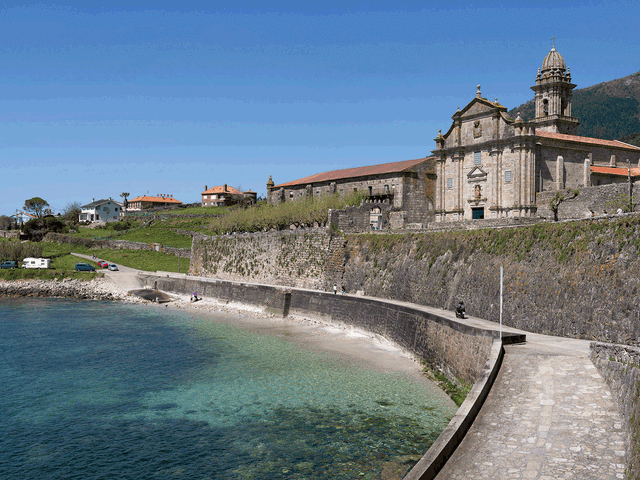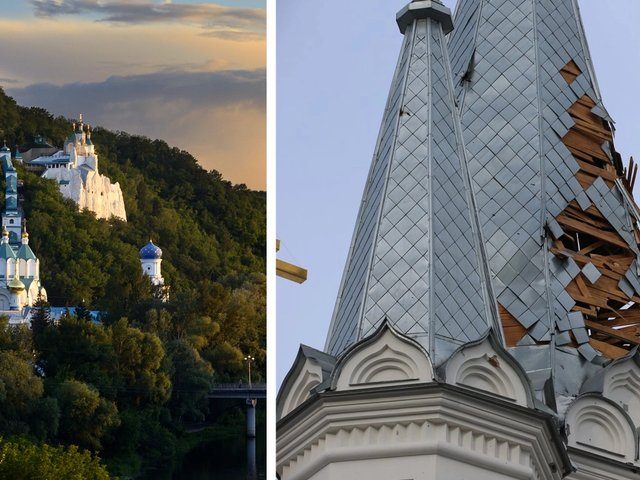The Leça do Balio monastery was designated a national monument more than 100 years ago, one of the first Portuguese landmarks to receive that honour. With its recent conversion into a cultural centre by one of the country’s best-known architects, the complex is opening a new chapter in its 600-year history.
Around five miles north of Porto on the banks of the Leça River, the monastery is said to have been built on top of the ruins of a temple dedicated to the Roman god Jupiter. Christian worship on the site is believed to have begun more than 1,000 years ago, and in the tenth century, the Order of St. Benedict opened a home where monks and nuns lived together. About 200 years later, the site was home to the Knights Hospitaller, a Catholic military order that protected pilgrims travelling through Portugal on the nearby Camino de Santiago pilgrimage route.
Secret wedding
The monastery complex and the neighbouring church that stand today largely date back to the 14th century. The Leça do Balio monastery witnessed a major event in Portuguese history in 1372, when Ferdinand I of Portugal married Leonor Teles de Meneses in a secret wedding ceremony after breaking off his engagement to a Spanish princess. Religious orders left the site in 1834, though the church, Santa Maria de Leça do Balio, remains an active place of worship.
Whether for the couple marrying in secret, the monks and nuns living communally or pilgrims seeking protection, the monastery has a long history of providing sanctuary. Now, the current owners hope it will be a refuge for culture. It was acquired in 2016 by Lionesa Group, a portfolio of businesses led by Pedro Pinto and his family. The best-known of these may be Porto’s famed Livraria Lello bookshop, which welcomes more than a million visitors a year. But their first business was the Lionesa Business Hub, which accommodates more than 120 companies next to the church and monastery.
The Lionesa Group bought the site as part of a plan to expand the business park and gave the architect Álvaro Siza the task of converting the Leça do Balio monastery into a cultural centre and the headquarters of Livraria Lello’s charitable foundation, dedicated to using culture as a tool to promote critical thinking. The opening exhibition at the centre, which examines the danger misinformation poses to society, is showing until summer 2025.
An experience for all
Aged 91, Siza continues to work on new architecture projects—and to smoke cigarettes. His goal in renewing the monastery was to maintain the site’s themes and traditions as a religious space, but also to open the experience to all, according to António Choupina, an architect who worked with Siza on the project.
As part of the renovation, an old silo once used for storage was transformed into a circular fountain where visitors can take off their shoes and dip their feet into the cool water. It recalls Leça do Balio’s position on the Portuguese route of the Camino de Santiago as a refuge for weary pilgrims. Cleansing the feet before entering religious spaces is also an important purifying ritual in Abrahamic cultures. Visitors pass the fountain before approaching Siza’s Open Sculpture (2024), a stark white structure built on the monastery property with cathedral-like elements.
Siza’s work also included the demolition of lower-quality structural components in the building to improve the space’s integrity. The granite elements of the site were conserved, while doors, windows and floors were restored where possible and reconstructed where necessary, Siza says. The Pedro Pinto family spent €2m on the first stage of the monastery conversion and plans to invest €10m in total, the foundation says.
The next step will be the development of the land between the monastery and the Lionesa Business Hub. The Livraria Lello Foundation has recruited the Portuguese landscape architect Sidónio Pardal to collaborate with Siza to create a 38,000 sq. m garden, expected to be completed by 2025.





